If you are looking for an honest review of Pimsleur Vs Rosetta then you have landed the right post.
Hey, soon to be language learners! Today I am going to help you all with two famous language learning portals namely – Pimsleur and Rosetta Stone.
Well, to start with both of these platforms offer various languages making the whole process easier for us as everything is available online and almost all of the courses can be completed independently.
I am sure that by the end of this blog you will get a clear idea about; what makes your language learning experience interesting.
Pimsleur and Rosetta Stone are two popular foreign language courses. They both offer a wide range of languages and levels. They are the same in many ways, but they have some differences too.
Pimsleur is all audio, while Rosetta Stone has pictures and interactive lessons.
If you want to learn a new language then you are at right place. So let’s get started with the Rosetta Stone vs Pimsleur Comparison.
Pimsleur Vs Rosetta Stone 2024
Pimsleur Range of Languages Available
Here’s a full list of what Pimsleur courses are currently available at the time of writing:
- Albanian
- Arabic (Eastern)
- Arabic (Egyptian)
- Arabic (Modern Standard)
- Armenian (Eastern)
- Armenian (Western)
- Chinese (Cantonese)
- Chinese (Mandarin)
- Croatian
- Czech
- Danish
- Dari Persian
- Dutch
- Farsi Persian
- Finnish
- French
- German
- Greek
- Haitian Creole
- Hebrew
- Hindi
- Hungarian
- Icelandic
- Indonesian
- Irish
- Italian
- Japanese
- Korean
- Lithuanian
- Norwegian
- Ojibwe
- Pashto
- Polish
- Portuguese (Brazilian)
- Portuguese (European)
- Punjabi
- Romanian
- Russian
- Spanish (Latin American)
- Spanish (Castilian)
- Swahili
- Swedish
- Swiss German
- Tagalog
- Thai
- Turkish
- Twi
- Ukrainian
- Urdu
- Vietnamese
- English (ESL)
Rosetta Stone Range of Language Lessons Available
Rosetta Stone offers a huge amount of languages, but not nearly as many as Pimsleur currently does:
- Arabic
- Chinese (Mandarin)
- English (American)
- English (British)
- Dutch
- Filipino (Tagalog)
- French
- German
- Greek
- Hebrew
- Hindi
- Irish
- Italian
- Japanese
- Korean
- Persian (Farsi)
- Polish
- Portuguese (Brazil)
- Russian
- Spanish (Latin America)
- Spanish (Spain)
- Swedish
- Turkish
Pimsleur Overview
Pimsleur is an American company offering language courses online and every course contains 30 lessons. The teaching approach of the courses is based on the Pimsleur method.
All the courses are offered in audio lessons (so basically listening and repeating what they say). Learning a new language is always like a cherry on the pie. You can easily learn Spanish with Pimsleur.
Rosetta Stone Overview
Rosetta Stone is also a platform similar to Pimsleur. The courses are offered in audio-visual format (that means pictures, listening tracks, and some writing exercises) and are based on the concept of dynamic immersion.
Native speakers teach the languages. This software also offers other programs like brain-fitness but it is mainly famous for language programs. Learning a language from Rosetta Stone is really easy.
Since today we are going to compare these two platforms we must understand both the concepts on which the courses are based. Both methods have a very different approaches to teaching a language.
Pimsleur Vs Rosetta Stone- Levels
Pimsleur– Levels
So in terms of lessons, Pimsleur has a fixed duration per lesson but when it comes to levels they have not standardized the number of levels. So a certain language may have 16 levels and the other only five.
The French language has 16 levels and…… This can turn out to be an issue if the language that I have chosen has only five levels, as it might not take me to my fluency target.
This whole thing again depends on the popularity of the language. If the language that you have chosen is not much popular you might end up having a very less number of levels.
Rosetta Stone- Levels
The number of languages offered on Rosetta Stone might be less compared to Pimsleur but there is a standardization of the number of levels.
So, all the languages have a minimum number of 3 levels per language course or a maximum number of 5 levels.
Even if the language is rarely used or spoken it is bound to have 3 levels at least. As every coin has a flip side, this feature can be a problem as well.
For example, if I have acquired a certain level of proficiency in a said language at the end of the fifth level and wish for more I will not have any option but this can happen at either of the platforms.
Pimsleur Vs Rosetta Stone- Use of English
Pimsleur
English is usually used as a mediatory language while teaching. If one doesn’t understand a word or a phrase in the target language, English or even the mother tongue can be used to explain it. This is a very common practice.
So in Pimsleur you listen to a word or phrase in your target language and English or your mother tongue and repeat it. But this can hinder your improvement in the long term as you will get used to having translation all the time.
My English teacher always used to tell me “think in English, don’t translate it to English from Marathi (my mother tongue)” So your proficiency in a language can also be assessed by your ability to think in that language.
Rosetta Stone
One feature that won me over is that Rosetta Stone don’t use a mediatory language.
All the courses are offered directly in your target language, although this might seem a little difficult at first, later on, you get a hang of it, and then learning becomes much easier. It also boosts your ability to retain the vocabulary.
So the reason that I am so sure about it, is that most of the worldwide recognized language institutes like Goethe Institut( German), Alliance Francaise ( French) insist upon teaching in the target language right from the basic level.
They usually pantomime the concepts or point out to some objects to explain the words and phrases.
Pimsleur Vs Rosetta Stone- Inclusion of Cultural Knowledge
Language cannot be learned separately, it goes hand in hand with culture. Cultural knowledge enhances your proficiency in a language.
Some concepts, some words or phrases are culture-specific; if you do not know the culture there are high chances that you might not be able to understand them.
For example, some cultures are honorific cultures meaning respect is given to elders or strangers while speaking or writing.
And the verb conjugation depends on this honorific pronoun so if you cannot understand this concept, you won’t be able to apply it and you might end up appearing rude to some of the people.
Although people are quite understanding some extra knowledge never hurts.
Pimsleur
Pimsleur does a good job of giving cultural references. There is always some extra information given about the culture and one can always refer to it.
This can always be an added benefit for language learners whose main aim for learning a language is traveling in the country.
While traveling one needs basic knowledge of phrases that can be used. And this extra information about the culture adds up to your basic knowledge and it is easier to mix in the community with the help of this.
Believe me, knowing at least something about the culture helps you. Two years back I was in Germany, I am quite proficient in the language but without any cultural background, I would not have been able to sustain for long.
My roommates were Germans and they would always compliment me for understanding and respecting their cultural boundaries.
Rosetta Stone
This is one area where Rosetta Stone lacks seriously. Culture is almost completely ignored here. Cultural references are close to absent. Even the pictures used are almost the same for all the languages.
For a person like me who wishes to learn the language as a whole, this can be a big red flag.
But that doesn’t mean that everybody has the same opinion, some might not be interested in learning about it and even say if I want to, I will google it.
Pimsleur Vs Rosetta Stone — The Pricing Battle 💰
Learning something new can be a big responsibility not just because of the time that you must invest in it but also because of the money that goes into it.
The influence of price always reflects in your decisions. We always want to be sure whether whatever we have bought is worth the price or not. So we must understand the pricing thoroughly.
Pimsleur Pricing 🤑
The subscriptions of Pimsleur are divided into two categories-
- Basic- $14/ Month with access to all the languages and some additional features like driving mode.
- Premium-$19.95/ Month with access to all the languages and a variety of additional features like Flashcards, speed round, Quick match, etc.
Rosetta Stone Pricing 🤨
Rosetta Stone might seem a little expensive but one mustn’t forget that they also have an additional offer of live tutored sessions.
So the per month subscription fee depends on that as well and the minimum subscription is of 3 months but you will mostly need more time to acquire some proficiency in the language.
And if you subscribe for longer durations it saves a lot of money.
Without tutor-
-
- 3 months -$21 per month
- 6 months -$19 per month
- 12months-$17 per month
- 4 months-$13 per month
With tutor-
-
- 3 months – $43 per month
- 6 months -$41 per month
- 12 months-$32 per month
- 4 months- $21 per month
Pimsleur Vs Rosetta Stone- Additional Services and Customer Support
Pimsleur
- Additional services- Pimsleur does not offer a variety of other services like games and all. Some games are available but only to premium members.
All the courses are available offline as well. And one can also download their Apps. - Customer support- You can contact them 24/7 via Phone and you can also fill out the form available on “Contact us” to get in touch with them through email. But they may or may not revert to you immediately.
Rosetta Stone
- Additional services- Rosetta Stone wins this match hands down because there are a lot of activities available to all of its subscribers and one can also play live matches with fellow language learners.
Most of the games are guessing games or Bingo style games. - Customer support- live chat facility is offered 24/7 and you can also contact them via emails.
All the courses are available offline as well. And one can also download their Apps.
Pimsleur Vs Rosetta Stone- Similarities
Quick Links
- Rocket Languages vs Duolingo
- Memrise Vs Duolingo 2024
- Babbel vs Duolingo 2024
- Rocket Languages Courses Coupon Codes 2024
- Babbel Review 2024
Customer Reviews
Pimsleur Reviews & Testimonials
Rosetta Stones Reviews & Testimonials
Trustpilot Reviews
Pimsleur Trustpilot Review
Rosetta Stone Trustpilot Review
FAQs on Pimsleur Vs Rosetta Stone
🤨Is the Pimsleur language learning system effective?
Yes, it is really effective even I have learned a few languages from it.
🙌Is Rosetta Stone or pimsleur better for learning a language?
I would say Pimsleur is better than Rosetta Stone in terms of pricing and languages offered by Pimsleur.
😎Is Pimsleur a good way to start learning Mandarin?
Yes it is, infact it is an amazing platform to start learning Mandarin.
👉How effective is Pimsleur?
imsleur is a pretty effective platform to learn a language if the method suits you.
😉How long does it take to learn a language with Pimsleur?
Pimsleur has a structured program and one expect to learn the language within an average time of 12-44 weeks.
👌Does Pimsleur teach you reading?
No, Pimsleur does not teach you to read but it teaches you to understand what is spoken.
🙋Can Rosetta Stone make you fluent?
Rosetta Stone can make you fluent till a certain level but an advanced level of fluency is not attainable through online independent language learning portals.
🙋♂️How long does it take to complete a language on Rosetta Stone?
It takes about 120-150 hours to complete a language depending on the number of levels in that course.
🤷♀️Does Pimsleur make you fluent?
No, one will not get fluent after completion of Pimsleur, it has different levels , it will help you get limited Vocabulary.
💡Does the Pimsleur method really work?
Pimsleur method is a bit boring but yeah it works, it is recommended to use the Pimsleur learining method with proper discipline and yes it will work.
😀Is Pimsleur good for Chinese?
In case you want to learn Chinese then yes one should consider Pimsleur. But in case you want learn about reading or writing of Chinese language then Pimsleur won't be able to help you much.
Is Pimsleur good for Italian?
Pimsleur Italian is a good way to learn Italian. You can hear the audio and study pronunciation. It may be your best chance for learning how to pronounce words in Italian.
Is the Pimsleur method effective?
Pimsleur is one of the best programs for learning to speak and understand a new language. It won't teach you how to read or write, but it does have exercises that help you learn.
Conclusion: Pimsleur Vs Rosetta Stone 2024 | Who Wins?
Overall, you need to consider whether it is better to learn a language with Pimsleur or Rosetta Stone. Both will help you learn languages but the Pimsleur course is cheaper and offers more languages.
The basic version of Pimsleur is only $14.95 so it is much more affordable than Rosetta Stone courses which cost over $200.
Pimsleur offers 30 half-hour lessons in many different languages while Rosetta Stone has 1-hour lessons with less variety of choice for language learning.
The Pimsleur course teaches by audio. It is not good for people who learn better visually. There is not much variety in the lessons, and they can be boring because there is no visual stimulation.
I like Rosetta Stone more because it has a visual teaching style and gamified lessons with an online tutor to make the lesson more interesting.


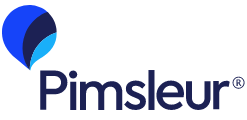

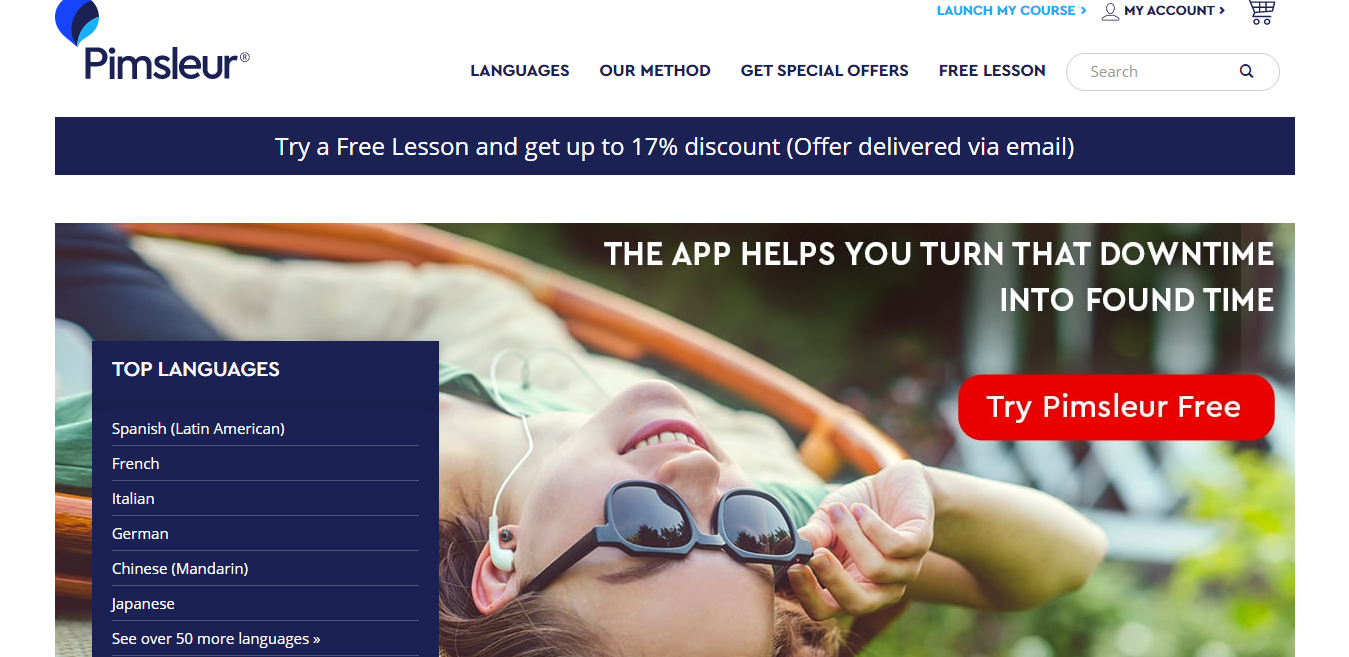
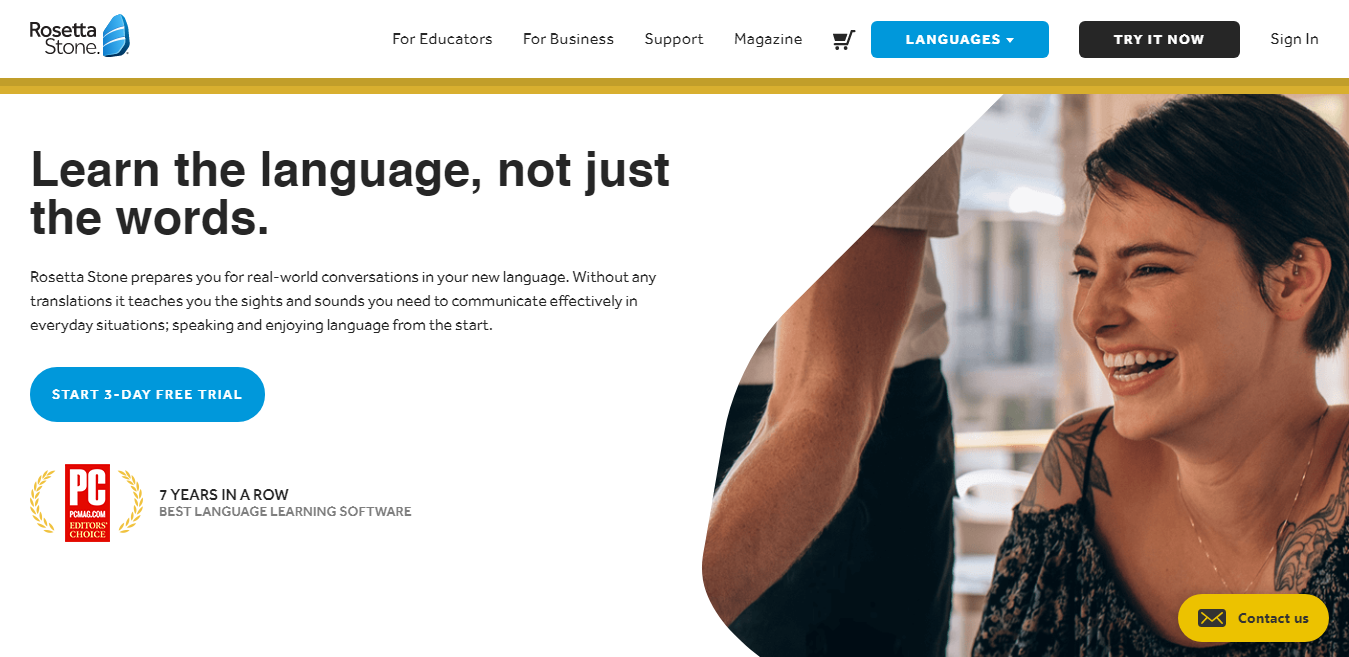
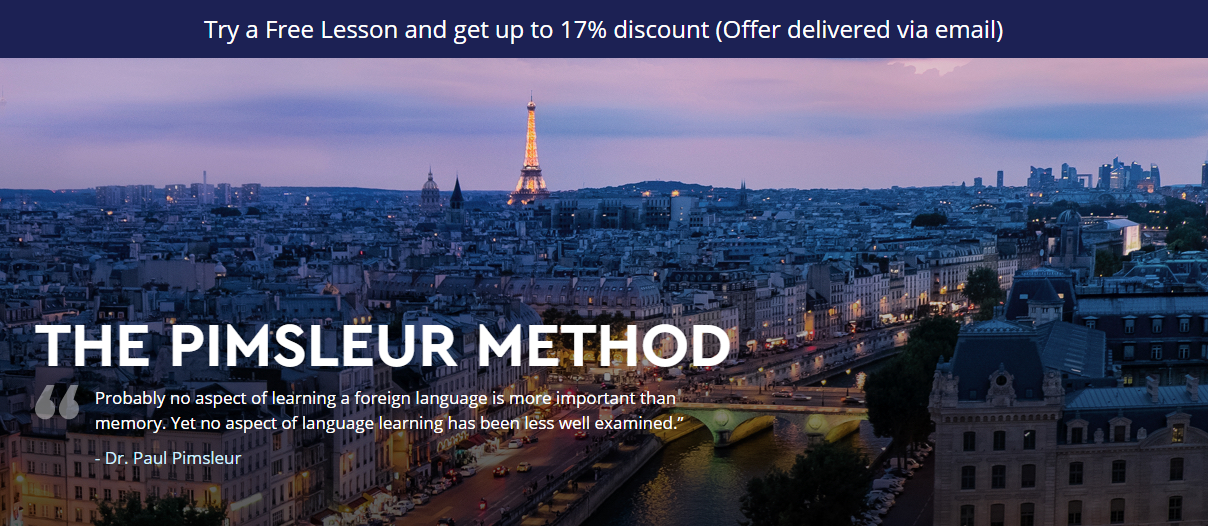
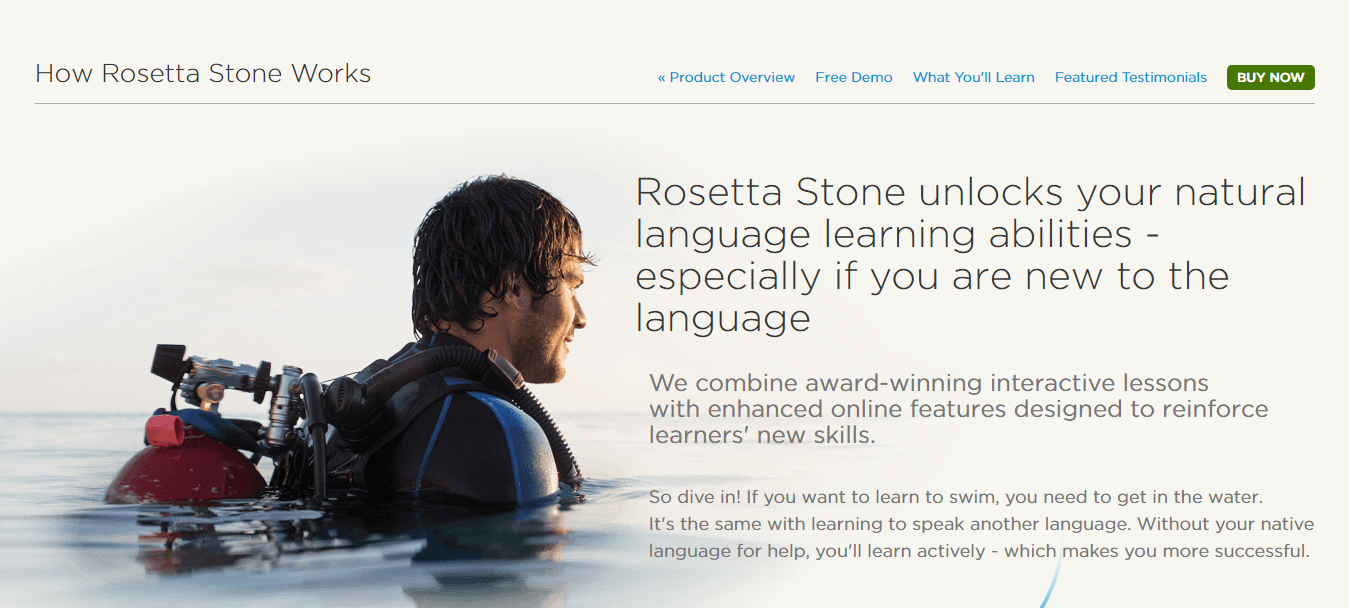
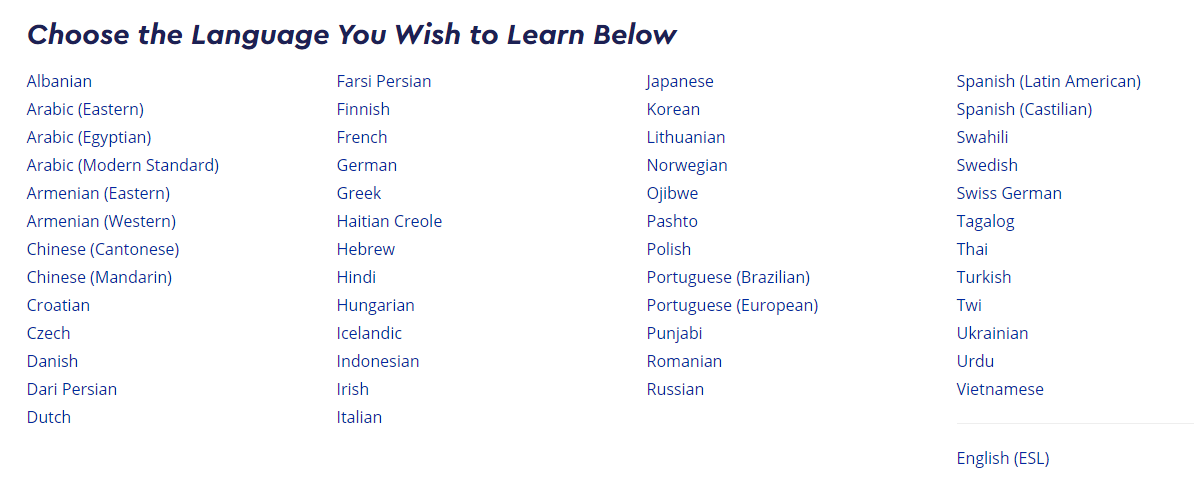
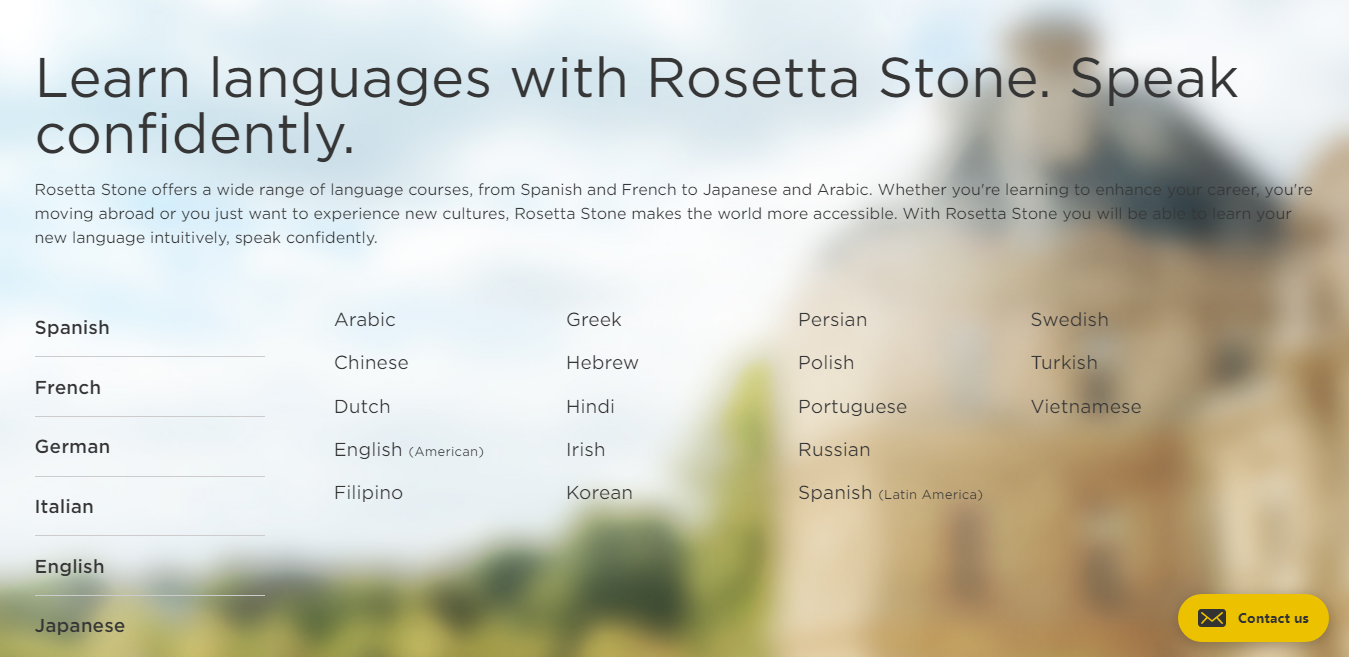

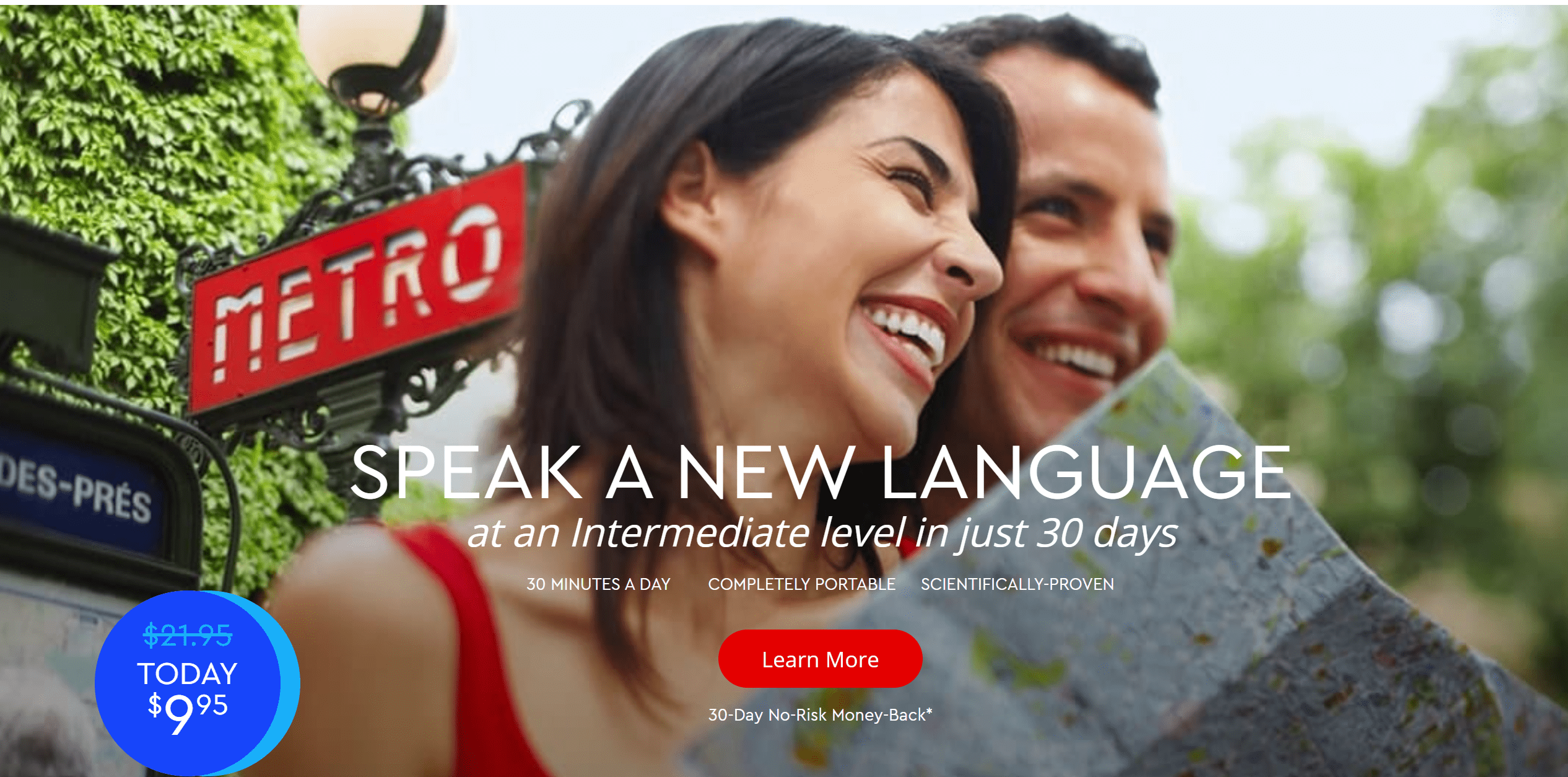
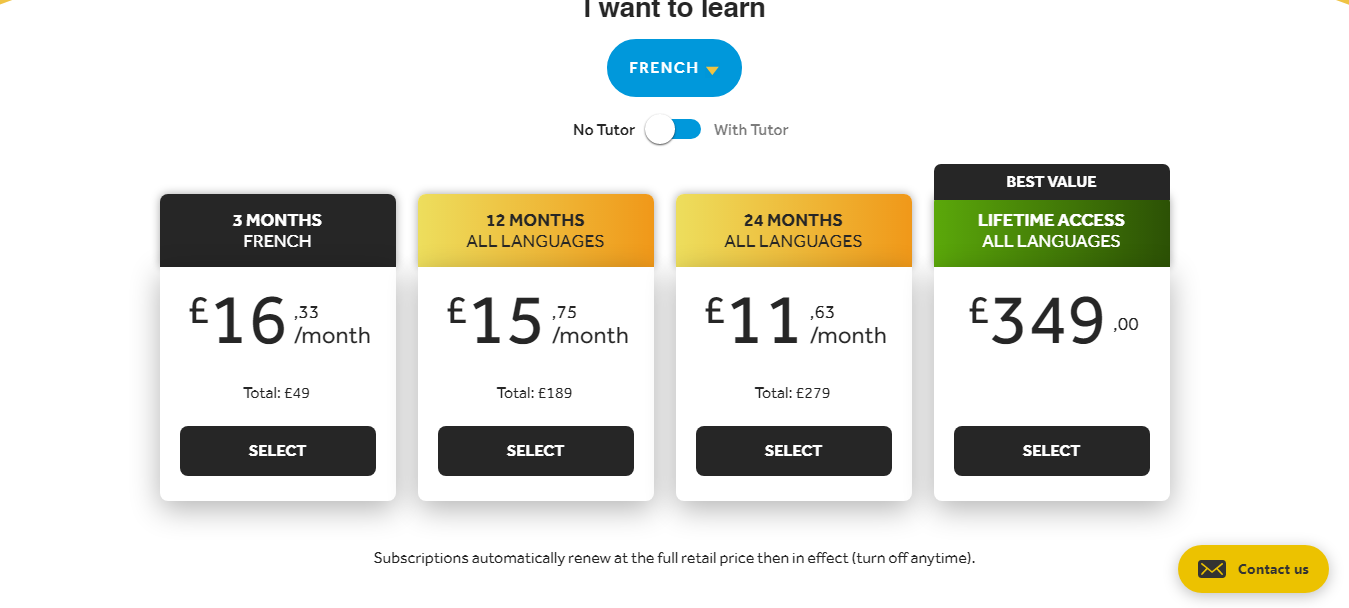
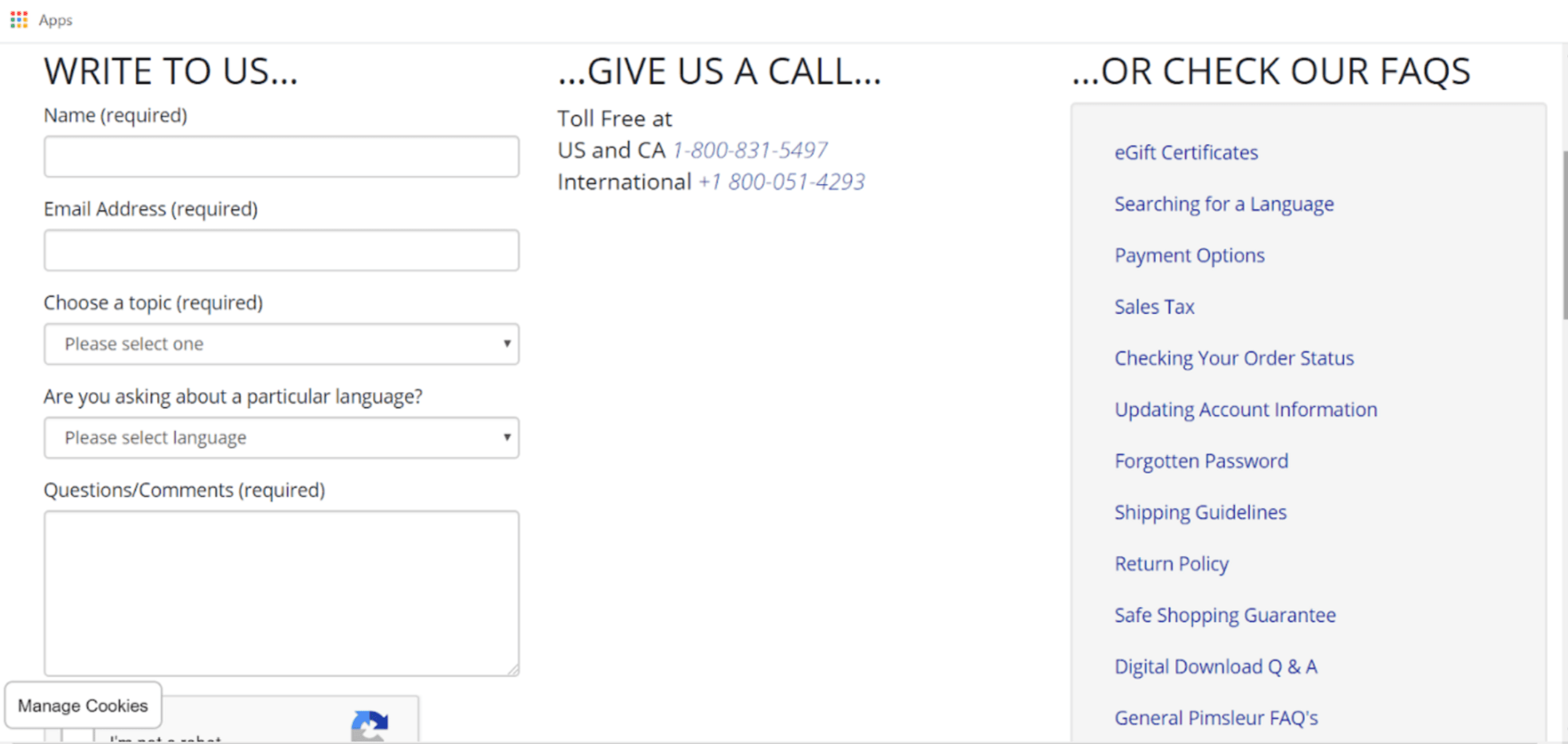
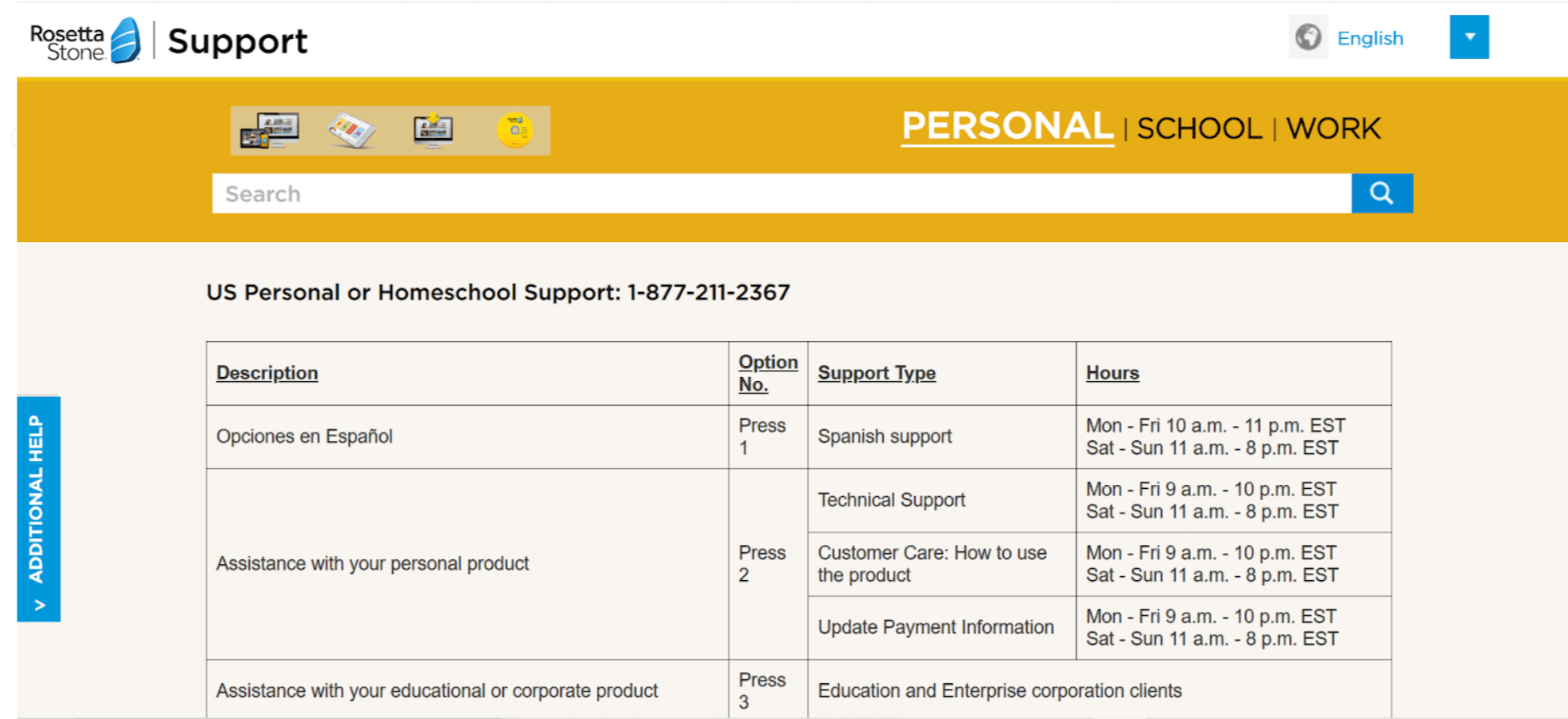
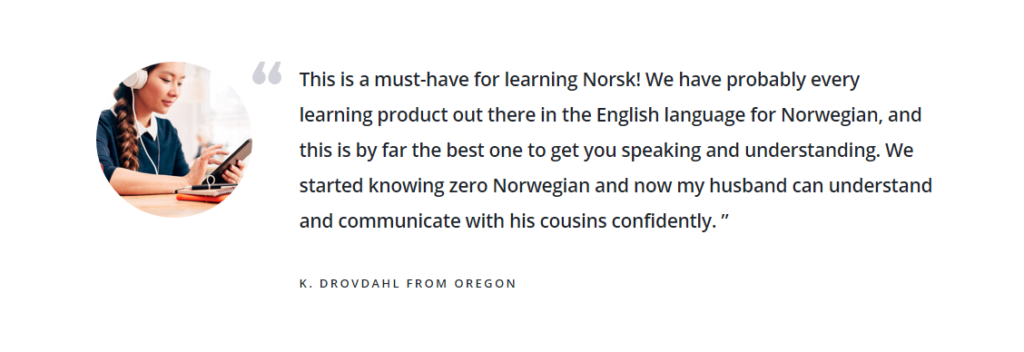
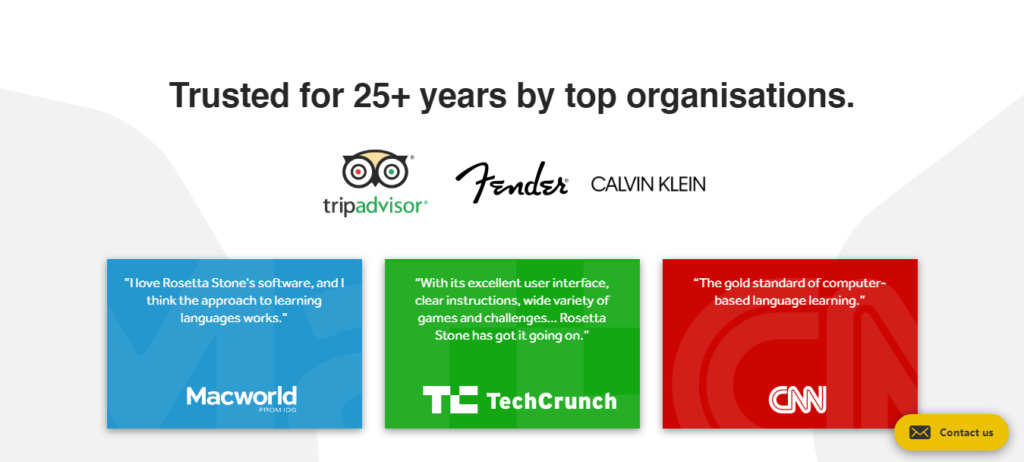
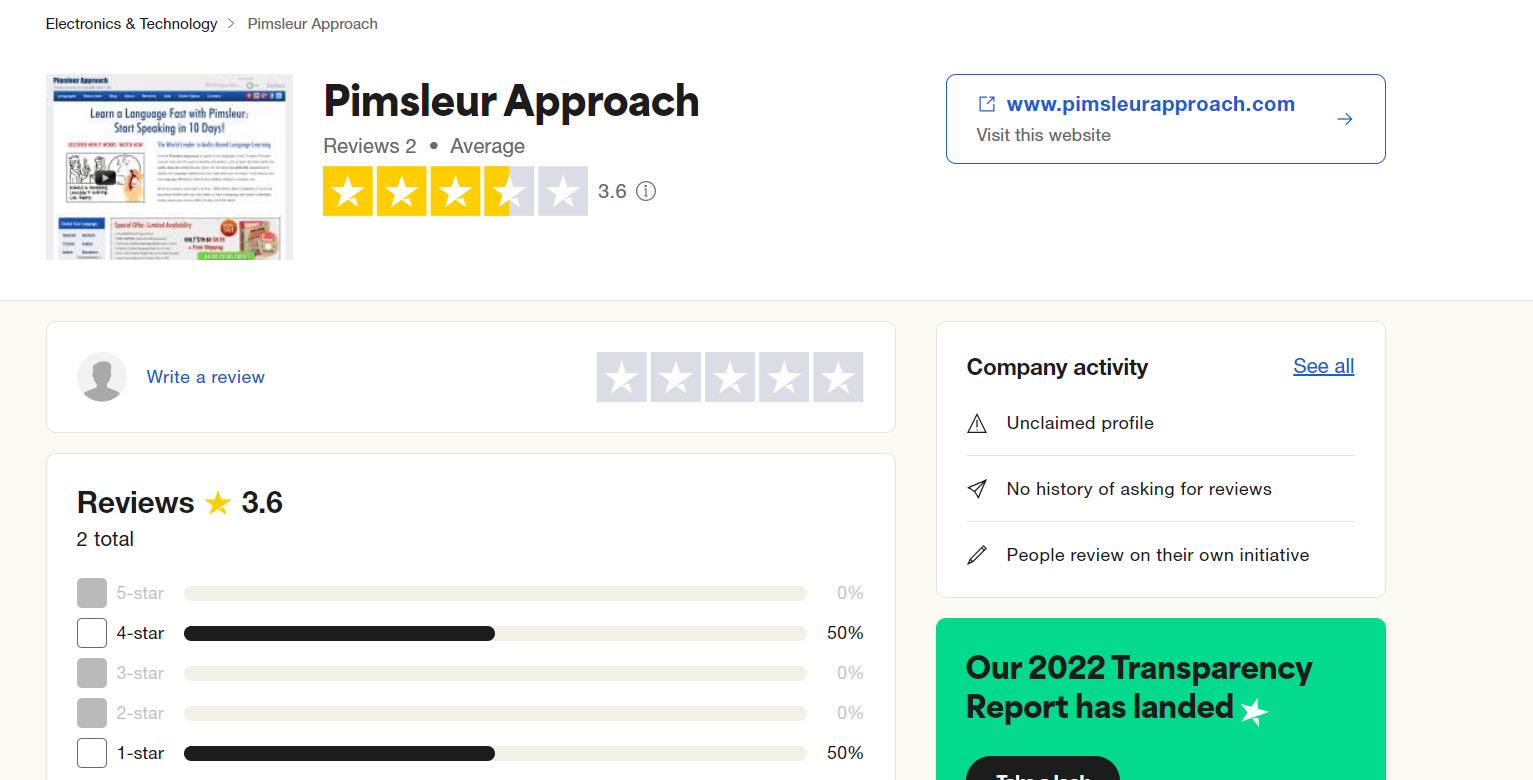
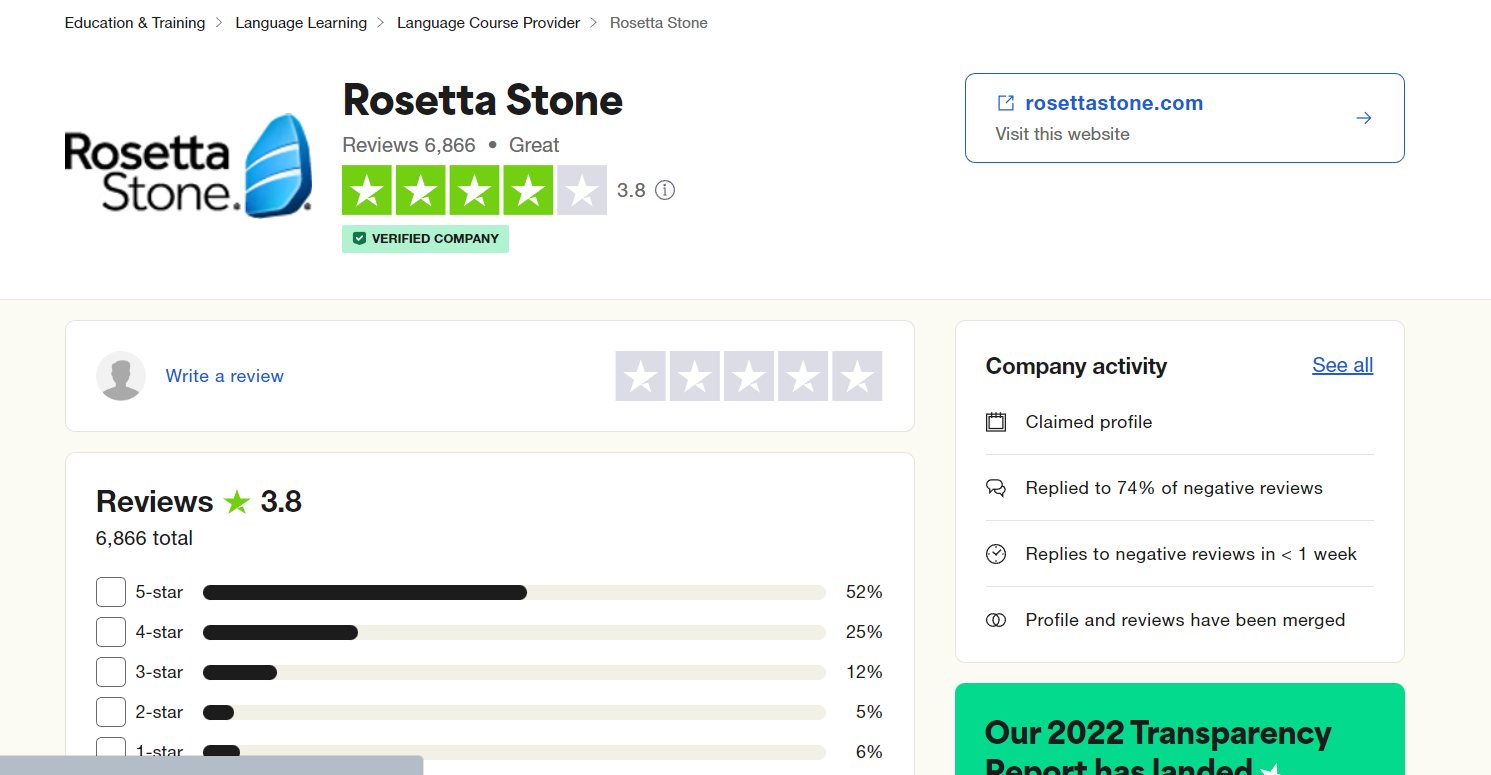
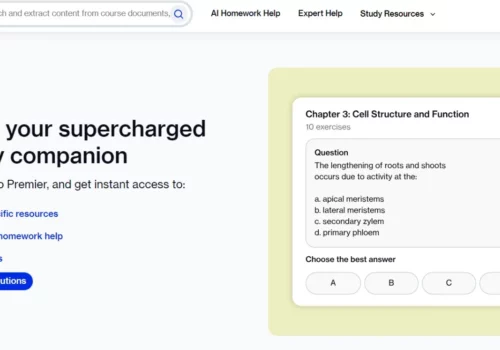

Rosetta Stone puts students in the front seat of their own education. Traditional models are not student-centred and they often leave students behind or don’t go fast enough. This allows students to complete the course at their level and in their own time. The usage reports allow the teacher to see how long the student is in the program and what the student has completed. This makes the student accountable which is something that we typically don’t have the ability to do in large classes where monitoring students can be a full-time job outside of teaching and all other duties.
It’s immersive and structured for your best learning. It’s very simple and logical and helps you to build your language skills in an effective and efficient way. I think it’s a great supplement to classes. I love taking Rosetta Stone before travelling somewhere. A few years ago I learned French with Rosetta Stone before taking a trip to Switzerland (the French-speaking region). It’s got a great, clean, modern interface. There are clear instructions, with games and challenges. It’s a fun and exciting method to learn a new language. It’s also a convenient way to learn because you can learn in your own time, compared to having a schedule to tightly follow. I learn this whenever I have a break or late at night after work when I have time to relax. This is why I think it’s a great supplement to the class.
I dislike the fact of Rosetta Stone that for every language you need to pay a lot. Instead of creating a big pack of languages and selling them as a whole and not as an individual language. Also, the way you configure each language could be very difficult for someone who does not handle well a computer.
I bought Pimsleur to help me learn Hindi, and so far I’m pleasantly surprised. This is the only app that tells you what you’re saying in English, so it’s much easier to figure out than apps like Duolingo where they don’t give translations until the lesson has finished or there are other errors in translation. You can also save words that confuse you into a list of words to research for when you have more time. It teaches phrases instead of just individual words, which will be much more helpful if any interactions with locals happen while travelling in India.
Pimsleur does a good job of giving cultural references – after hearing different dialects on the app it opened up my understanding about many cultures around the world!
Simply put, Pimsleur is my favourite tool for learning a language! I loved the consistency of the lessons and thought progression. The simplicity and efficiency was my favourite aspect as well as its emphasis on a conversation which reinforced grammar points learned in previous modules.
Pimsleur is cheaper, provides more languages for learners to choose from, and it’s easier to learn with.
Pimsleur is better than Rosetta Stone. First, you need to buy a basic software package before buying any language courses at a price of $299 which means that for those who take foreign languages as hobby and can’t afford paying so much money it might be too expensive. Second, the number of languages offered by Pimsleur is more than Rosetta Stone and also less expensive (you only need to buy one software course and then each language course will cost about $10). So I think that Pimsleur is better because not only does it costs less but the quality of teaching isn’t bad for this type of programs.
The comprehensive immersion Rosetta Stone offers first-time learners. It has many units that cover language topics thematically. The software is visually appealing and easy enough to figure out. The reports to track learner progress are interesting but I wish they allowed more specific views into a student’s work. I also like the level of management and structure of creating groups and lists.
Pimsleur is an audio-based course on conversational language skills. It consists of thirty lessons each featuring a variety of topics and building upon what was learned in preceding lessons. Reading, writing and speaking skills are accommodated while providing lots of listening comprehension work, grammatical explanations and practice for vocabulary usage in new contexts. Pimsleur is not designed to teach you the rules; it aims at getting your lips ploughing by rote so that when the time comes you don’t stall. The courses themselves can be completed within six months for between $12-$15 per lesson which makes them really affordable!
I became a fluent speaker of Pimsleur French during my first 2 months. It was an easy and affordable way to learn the basics of the language, grammar, and conjugations. All thanks to this amazing audio-based program, I’m now speaking with confidence.
I love how the Rosetta stone completely immerses you in the language you are trying to learn. I used it to start learning Mandarin Chinese and this was crucial because any other program was mostly just reading, but Chinese has so many pronunciations that it was crucial to be speaking. It is really effective to constantly be using pictures to form associations, even if you aren’t a very visual learner because you’re also speaking and listening. Using every sense like that ensures the most effective learning possible.
Pimsleur product made me speak Italian like a native. I tried Rosetta Stone, but it didn’t work as well for me and was too expensive. The lessons were super easy to follow and the exercises were fun. I would recommend to anyone learning another language!
I enjoyed that the Pimsleur program had many aspects. The main part of the program is listening to audio and practising with them. As you listen, it prompts you to use the words and reminds you of their meaning. After the daily lessons, you could practice vocabulary using flashcards and quizzes. It made the review fun and allowed you to see as well as hear the words.
As a Linguistics student in college, I know that a simple word exchange does not work in retaining a language which is why I love how Rosetta Stone teaches you. They provide new vocabulary in connection with an image or video on the action, which your brain then associates with that item and not with the word you already know.
I tried Rosetta Stone a few years ago and I found it really helpful! They have a LOT of different languages you can try or learn. If this isn’t the best program for language learning, I don’t know what is. Try to use an app like Duolingo before giving up on your dream of speaking foreign languages.
A creative way would be to take advantage of their free trial to “speak international fluently.”
I use Rosetta Stone with my students to teach them Spanish. While the basis of the program is good, the timing needs a lot of work. When asked to repeat a word, you end up getting it wrong because you say it immediately and that will end up being before the beep. By the time you repeat the word again, you’ve already missed it.
With Pimsleur, you lay the groundwork for fluency in a new language. To start out with “Pimsleur”, I recommend that you have an interest in learning to speak the words of the same language because it’s what will keep you going through this 30-Lesson course. What counts is your motivation and willingness. That’s why people are so passionate about their own mother tongues! It has been my experience that you need to use any new vocabulary as much as possible to improve yourself, so be diligent not only during your lessons but also outside of them by talking with others around the world who speak your desired language or listening to cultural media, or studying music from different countries.
Pimsleur is one of the most accurate and effective programs for learning to speak and understand a new language. This audio-based system won’t teach you reading or writing, however, nor does it have any games or interactive exercises for many of its languages.
I’m surely to recommend this tool to everyone!!
Yes, I’ve always seen the commercials on TV with that one lady in front of an Apple Store -searching for her phone- convinced she’s at the foot of Mt. Everest, only to realize she took it off and left it back by her stable. It was hilarious! But Pimsleur is not like any other language method out there because they make learning languages truly easy (20 minutes a day!) You can start speaking confidently right away through their 30-minute lessons. With 6 levels, you’ll be covered for 6 weeks worth of conversations when you travel abroad or need to speak another language around your co-workers or customers!
I think Pimsleur is the most helpful language app EVER!! Like it provides you with context and sentences to practice what you’ve learned plus more! I love that they always give information about where people are from, their culture, etc. It’s just amazing because of how easy it can be for foreigners to learn a language but not understand anything subliminally. This app gives them an easier way.
I like the way the Rosette Stone builds progression from unit to unit. The illustrations are wonderful, and the offline lessons and workbooks are great tools to reinforce what the students are learning online. The program is well designed and I like that it can be used as a curriculum for our English language learners.
The coursework of Rosetta Stone is highly repetitive, and you have to work through quite a bit of material that has little real-life applicability before reaching anything useful. You’ll be memorizing the words for “child”, “boy”, “girl”, “run”, “milk”, “water,” etc. for many an hour before reaching anything conversational level. There is also a tendency for the program to run into errors that can cause you to lose your progress.
So you want to try out Pimsleur? I’ll tell you why it’ great. First of all, the language is taught in a way that’s easy for an English speaker to follow. They focus on teaching fundamental vocabulary and basic phrases such as greetings and polite expressions so one can learn quite fast how to communicate simple messages before moving onto more sophisticated material. Textbook-like lectures are broken up by mini-lessons with comprehension drills at each lesson’s end: gotta love repetition! The practical topics they cover include introductions, dining etiquette and business conversations because let’s face it: we’re not always going out into the world armed with pompous French jargon or complicated Egyptian idioms – we need some everyday dialogue too.
Pimsleur is a great place to start your bilingual journey. It focuses heavily on repeating words and translating them in your native tongue (i.e English) rather than thinking in the language you’re learning. But it still requires dedicated practice to reach conversational capacity in both languages. This may seem like an odd approach, but Pimsleur has been around since the 1970s and continues to be relevant with its “just winging it” mentality yet tangible results method.
I first started using Rosetta Stone last year, and I won’t use anything else. It’s actually the only way I learned how to speak English, and now that I need it for my job, it makes it so much easier than taking classes. Truly a priceless experience! All of your progress is saved so you can move between languages at will.
I like the fact that Rosetta Stone connects new words with images to create a word/image association, however, it can be better by introducing more images for similar words to create a more profound and thorough association. Another great thing is it’s a learn at your own pace and schedule platform, making learning a new language much more convenient.
“It’s like magic! Now you can totally speak like a natrually bilingual person with the help of Rosetta Stone. I prefer Rosetta Stone over Pimsleur
I am an avid traveller and I always wanted to learn a second language, but I didn’t find it so easy. That’s when people told me about Pimsleur and how engaging this is for learning languages on the go. As you listen to it at home or on your commute, your brain does some extra work as it listens and remembers more than just words as they’re spoken as if by native speakers who speak different dialects of that same language. You’ll also get those little extras like culture legends, stories from history– all things that give you a sense of pride in what might be your heritage and make new destinations seem like coming home again.
If you’re like me and decide to take on a new language purely for the pleasure of it, then Pimsleur is the perfect program. You can work at your own pace, there are no dumbing down of words or complicated grammar exercises. All of this combined with their good-natured yet serious tone make learning simpler and easier than I ever imagined!
Pimsleur offers conversational bits that will help people learn French slang and everyday conversations that may happen in France.
Comprehensive lessons with enough repetitions to cement concepts for many available languages. The Rosetta Stone app works great on IPad and iPhones as well, better than even the web app. The no translation, image to word association strategy worked well for me.
I always wanted to go to France, but could never reach the same level of speaking fluency as I did in my native language. Before Rosetta Stone Unlimited Languages, this was a reality for me thanks to the limitation of non-unlimited accounts. But with tons of classes to choose from at any time and no schedule or progress limitations, I finally feel comfortable visiting Paris!
I never liked learning Spanish, I’d always think in English and then translate into Spanish later. It took me a long time to just get used to speaking without translating my thoughts. BUT when I started using Pimsleur, things got easier – even the grammar became less intimidating because it just came out of my mouth naturally. Now I really like speaking and writing in Spanish! Probably the best $90 bucks I’ve ever spent!
“I really love Rosetta Stone. I’m still struggling with the more difficult languages, but even then, it’s a lot of fun! It’s amazing to see myself learn little snippets of new languages on my own time, without any pressure!”
Rosetta Stone and Pimsleur are both good for learning foreign languages. But I think Pimsleur is better because it costs less and you can learn many languages. The basic version of the software costs $14.95, which is much cheaper than Rosetta Stone, where you need to buy a language course package before buying any language courses at a price of $299.
It’s no wonder why so many people prefer Pimsleur over Rosetta Stone with all its benefits!
Pimsleur is a well-reputed language course to help learn languages like Arabic, Italian or Japanese. It consists of audio CDs and this teaches you the language by listening to it in its target language and repeating what they say in both your own tongue and English. This helps increase accuracy to speak with a good accent, but it would be better if you try this for at least 35 hours a week because not all the teaching will get through just by listening once a day.
Rosetta Stone and Pimsleur are both good for learning foreign languages. However, I think Rosetta Stone is better because it costs less than Pimsleur and you can learn many languages. The basic edition of the software package only costs $299 which gives enough time to compare between various language courses that Rosetta Store offers.
The pronunciation techniques. Pimsleur walks you through each syllable of the word several times allowing you time to repeat. I used Pimsleur before travelling to France and after only a few months of practice I had a lot of compliments on my pronunciation while I was there.
After spending $100 on Rosetta Stone, I am finally able to speak Spanish. But things took me weeks to figure out because it’s really hard… My mom was so proud of me when she found the saved progress in the other languages that I did!
Hi! I’ve been doing a lot of research on foreign language courses, lately. The two that are the most popular are Rosetta Stone and Pimsleur. To me, though, it seems like Pimsleur is better because the prices are much cheaper. With both products you can learn many languages – but to get one with Rosetta Stone you have to buy a basic software package first for $299 which will only teach you one language!
Pimsleur’s method of teaching is top-notch whereas there isn’t any information about how Rosetta Stone teaches its students other than it focuses on active vocabulary acquisition through repetition and context clues.
The best way to learn a new language is with Pimsleur! It’s the only program that guarantees you’ll improve at least 30% in just 24 hours of studying. Why spend all your money when they’re so much more cheaper than Rosetta Stone? I’m glad I have learned many languages this way, and it’s very easy to pick up on any vocabulary through context clues in the audio lessons they provide for you.
I like that the layout of Rosetta Stone is very defining, with no chance to get confused or mistaken. As a new learner, its courses are very interactive with images and several media. Courses are not that long, which is good for someone who is trying to learn the language at a fast pace. A great feature that helps during the courses are the repeat course option, which let you do the course again in case you didn’t feel comfortable on the first try. Overall, this language learning system is a great tool for the purpose.
Rosetta Stone and Pimsleur are both good products that teach different languages, but it’s always better to save money. Pimsleur is more popular because it costs less and you can learn many languages. The basic software package for Pimsleur only costs $14.95 while the language courses cost about $9 each. Whereas with Rosetta Stone, where you need a basic software package before buying any language courses at a price of $299. This makes Rozetta Stone much more expensive than equivalent products on the market such as Pimsleur which starts out cheaper and offers a wider range of languages starting from English, French, Spanish Italian all the way to Swahili!
As advertised, Rosetta Stone software creates an immersive language experience that uses methods through which you acquire your native tongue as a child. These include interactive lessons with speaking, listening, reading, and writing. In particular, the software relies on images/pictures and associative vocabulary to drill new vocabulary into the mind of the user.
I had used Pimsleur a while back in college and I am getting ready to start using it again. With the few lessons that I got, I was able to order food at a restaurant and get directions without needing translation for every word that came my way. It’s an amazing tool for anyone who spends time in another country or even somebody who has family members from other countries all the time!
Pimsleur is a great way for you to learn English if your mother tongue is not. You get all the advantages of having someone speak right in front of you who speaks fluent English, helps guide you on pronunciation and grammar, helps keep you interested with stories at the same time. But over time it might just be less good because if one doesn’t understand then they are always translating back into their mother tongue which hinders their ability to think in that language.
I have been looking for a way to learn my parents’ native tongue, and I have found it with Rosetta Stone. In no time at all I’ve learned more than enough phrases that made conversations easy! Plus, the app changes language without having to do anything but cross your fingers.
I prefer Pimsleur to Rosetta Stone because it is cheaper and has better teaching methods. The basic version of the software costs only $14.95 which you can buy before buying any languages at a cost of $299 with easy monthly payments – starting from starting from just $3 per month!
Pimsleur is a top-notch language course where the teachers have been native speakers from all around the world, and offer courses in more than 30 languages. They also come with self-guided lessons to practice at your convenience.
Their basic software package costs $14.95 which includes 5+ hours of audio content and further language courses cost about $9 each – much cheaper than Rosetta Stone, where you need to buy a basic software package before buying any language courses at a price of $299.
Aside from the high cost, which is a bit steep, the aspect of Rosetta Stone I disliked most was a slow speed and repetitive nature of the learning process. While I understand the necessity of repetition for learning, it often seems as though you are stuck doing the same (relatively easy) sentences over and over again. In other words, it’s very time-consuming and I often feel I can’t dedicate proper time to it due to my busy schedule.
Rosetta Stone makes learning a new language casual & accessible. It’s great that most of the lessons are only 5 or 10 minutes long, making it possible for me to squeeze one or two in between calls and meetings.
I really wish that there was a pretest for Rosetta Stone. Although I recognize that this is an extremely useful tool, I am kind of bored with it since I am going through a lot of stuff I have already learned.
Pimsleur product is the best. The phrases are really repetitive, so you get to learn them easily, and it’s fun because there are lots of videos where you just click on what you want to do. There are also talking exercises that help with pronunciation. You can even let this program teach your kids! When I finish learning Italian, I’m getting Russian too!
I have been looking for a way to learn my parents’ native tongue, and I have found it with Rosetta Stone. In no time at all I’ve learned more than enough phrases that made conversations easy! Plus, the app changes language without having to do anything but cross your fingers.
I like how Rosetta Stone uses the “immersion approach” and just starts you off as if you had moved to a new country. It starts off with no instructions in your own language. It shows you various pictures and talks to you in the language you are trying to learn. I also like that you can visually see the native speakers audio pitch.
There are a lot of language learning software systems on the market today, but Pimsleur is vastly superior to all of them. Specifically, it’s a lot cheaper and more flexible than any other option out there–you can pick up any number of languages for just $14.95. Another thing that sets Pimsleur apart from the competition is that you can learn virtually anywhere–like when you’re waiting in line or taking public transportation to work, because it doesn’t involve cramming vocabulary into your head with obvious gaps in between studying sessions like Rosetta Stone does. The basic version of the Pimsleur program only costs $14.95, so I highly recommend this software system over anything else!
Rosetta Stone courses are great for those who have a little extra time and a lot of money to spend on a solution that is both intuitive and life-changing, but I think Pimsleur is just as good. If you’re worried about the price tag on Rosetta Stone, don’t be – it’s worth every cent!
The Pimsleur system teaches 30 vocabulary words per lesson with 60 seconds or more of recorded speech by native speakers in each word list.
Pimsleur is far more better than Rosetta Stone on various aspects such as the number of languages it offers is more than Rosetta Stone. It costs less and hence does not burden you financially also. In this world of globalization, learning a foreign language can be beneficial to us in different ways, whether for business reasons or just going on a holiday being able to communicate with foreign people becomes easy without any difficulty.
Pimsleur can be used in situations where you are learning a language, don’t have the time to learn in person or want to revisit material that is important for conversation. This system has currently 80 languages available which focus on the conversation to help people improve their conversational skills. The content of this course includes 34 hours of audio instruction with full-length practice conversations and immediate feedback not only by repeating what you hear but providing alerts when there are patterns or sounds that you’re struggling to form correctly. Pimsleur does all the heavy lifting for you by presenting it in different ways, no translation is needed.
Pimsleur is the best foreign language program out there. It’s cheaper than Rosetta Stone and it offers more languages to learn from. The bottom line is that Pimsleur gets the job done just as well as Rosetta Stone, but at a lower price.
Rosetta Stone and Pimsleur both make excellent software for learning a foreign language, but I think that Pimsleur is the better choice because it costs less and offers more languages. With Pimsleur, you can buy a basic course of any language at $14.95 as opposed to Rosetta Stone’s basic package which is priced at $299. There are also many other cheaper courses offered by Pimsley that cost about third of what is charged by Rosetta Stone per lesson ($9 vs. $36).